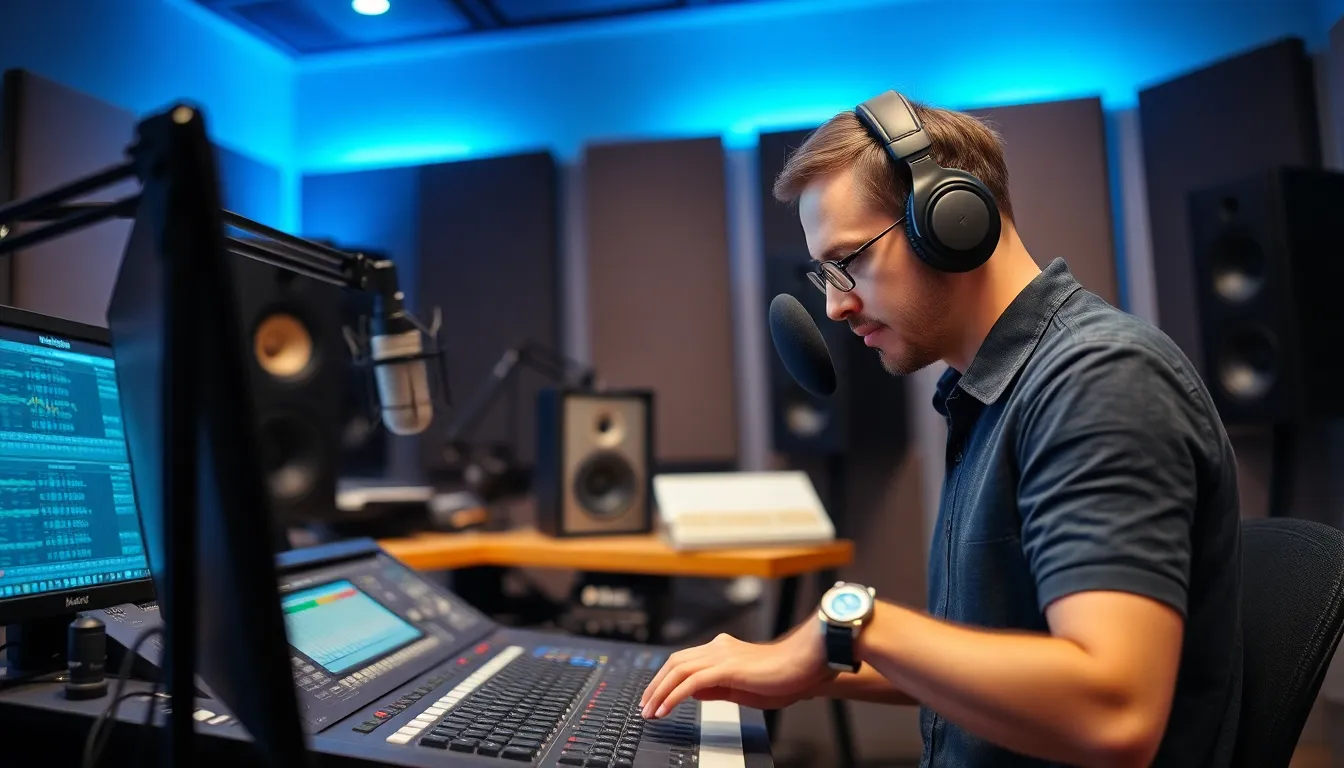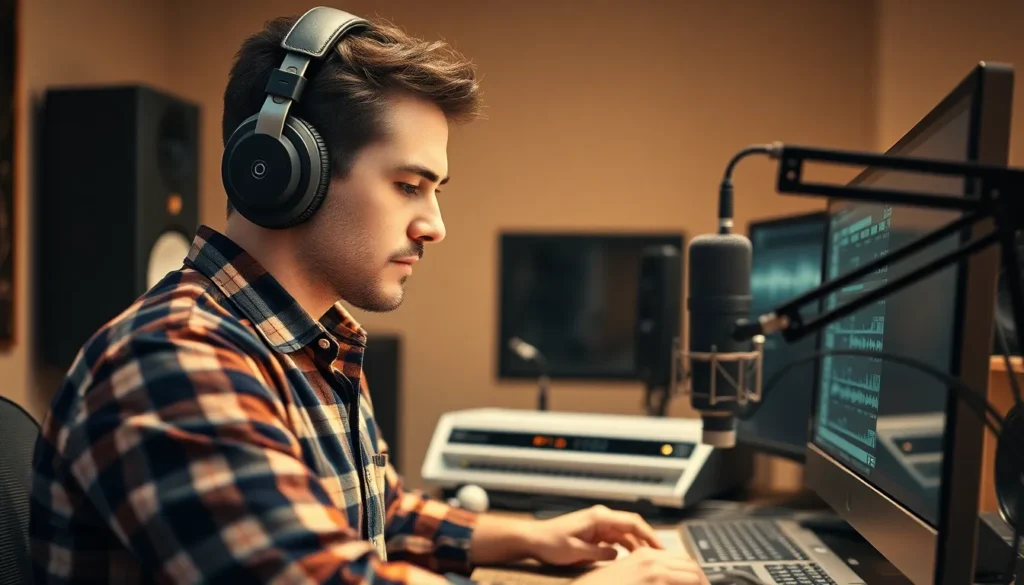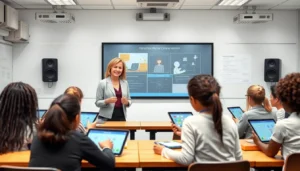Table of Contents
ToggleIn a world where audio glitches can ruin the perfect podcast or that heartwarming family video, audio repair is the unsung hero we never knew we needed. Imagine recording your masterpiece only to find it sounds like a cat wrestling with a vacuum cleaner. Fear not! With the right tools and techniques, those pesky audio issues can vanish faster than your motivation to hit the gym after the holidays.
What Is Audio Repair?
Audio repair refers to the process of correcting and enhancing the quality of audio recordings. It involves identifying and fixing issues such as noise, distortion, clicks, pops, and other unwanted sounds that detract from the listening experience. Correcting these imperfections is crucial, especially for professionals and creators who rely on clear and balanced audio in their content.
Several methods are commonly utilized in audio repair. Noise reduction techniques help eliminate background hiss or hum, improving clarity. Equalization allows for adjustments to frequency balance, making voices sound more natural. Click removal tools effectively address sudden interruptions caused by digital errors or physical damage.
Software plays a significant role in audio repair. Various digital audio workstations (DAWs) and specialized plugins offer powerful functionalities for editing and repairing sound. These tools provide users with extensive capabilities for analyzing and refining audio tracks. Familiarity with these technologies enhances a technician’s ability to deliver high-quality results.
Several factors contribute to successful audio repair. Understanding the source of the problem is vital, as different issues require different solutions. Experience and a discerning ear significantly impact the outcome. Each audio clip presents unique challenges, necessitating a tailored approach for effective repair.
Among common audio repair tasks are removing unwanted elements, reducing excessive reverb, and balancing audio levels. Successfully accomplishing these tasks leads to improved production, fostering a pleasant listening experience for the audience. This attention to detail ensures that the final output meets professional standards.
Common Audio Repair Techniques

Various audio repair techniques enhance the quality of recordings. Individuals often use these methods to address common audio issues.
Noise Reduction
Noise reduction helps eliminate unwanted background sounds. This technique focuses on identifying specific frequencies associated with noise and attenuating those frequencies. Tools within digital audio workstations (DAWs) allow users to analyze audio clips effectively. Applying a noise gate minimizes volume levels when sounds dip below a certain threshold. Another option involves using spectral editing, which targets noise visually and removes it without affecting the desired audio. Results include clearer vocals and cleaner overall recordings.
Click and Pop Removal
Click and pop removal focuses on addressing sudden transient noises in audio files. Such noises often occur during recording or playback and disrupt the listening experience. Using specialized plugins, individuals can detect and eliminate these artifacts without impacting the original audio quality. Manual repair options also exist, allowing engineers to use tools like editing with a pencil tool to smooth sharp peaks. The outcome enhances overall audio clarity and results in a professional final product.
Tools for Audio Repair
Effective audio repair relies on various tools that enhance recording quality. Multiple software options and hardware solutions cater to specific audio needs.
Software Options
Numerous digital audio workstations (DAWs) offer powerful audio repair tools. Common choices include Adobe Audition, Audacity, and Logic Pro. Many DAWs feature built-in plugins for noise reduction and equalization. Some offer advanced spectral editing capabilities, allowing pinpoint adjustments to frequencies. Users can manage unwanted sounds with precision, improving overall clarity. Specialized plugins, like iZotope RX and Waves Restoration Suite, further facilitate repairs through advanced algorithms. These tools make it easier to correct clicks, pops, and other audio anomalies. With the right software, creatives can transform even damaged recordings into polished audio.
Hardware Solutions
Quality hardware significantly impacts audio repair results. Microphones, audio interfaces, and processors contribute to capturing and refining sound. High-fidelity microphones serve as the first line of defense against unwanted noise. Audio interfaces enhance sound quality by converting analog signals to digital with minimal loss. Dedicated audio processors, such as compressors and noise gates, effectively manage dynamic range and eliminate background noise. Investing in these devices ensures clarity and consistency. Combining quality hardware with skilled technique leads to superior audio repair outcomes that meet professional standards.
Best Practices for Audio Repair
Assess the audio quality carefully before starting repairs. Identify key issues such as noise, distortion, and clicks. Utilize software tools effectively, focusing on digital audio workstations like Adobe Audition, Audacity, and Logic Pro for built-in plugins that enhance audio clarity.
Implement noise reduction techniques to silence unwanted background sounds. Apply noise gates to target specific frequencies, allowing for a focused listening experience. Utilize spectral editing tools for more precise adjustments, ensuring each recording shines.
Address clicks and pops by using specialized plugins. Many audio repair software options provide tools for transient noise removal, significantly improving the overall sound quality. Crafting a seamless audio experience often involves both automated and manual techniques.
Balance audio levels to maintain consistency throughout the recording. Equalization plays a vital role in this process, allowing for adjustments that clarify and enhance the audio mix. Monitor audio levels regularly to prevent distortion in final outputs.
Invest in high-quality hardware for the best repair outcomes. Equipment such as high-fidelity microphones and quality audio interfaces contribute significantly to sound capture. Dedicate time to learning the capabilities of these tools, as effective usage can lead to professional-grade results.
Practice patience and skill in the repair process. Each audio clip presents unique challenges. Experience gained from tackling various repair tasks builds proficiency and confidence in audio editing skills.
Mastering audio repair is essential for anyone looking to enhance their recordings. With the right tools and techniques, it’s possible to transform flawed audio into a polished masterpiece. Understanding the intricacies of various software and hardware options empowers creators to tackle common issues like noise and distortion effectively.
Investing time in learning audio repair techniques not only improves the quality of projects but also elevates the overall listening experience. By applying best practices and utilizing advanced plugins, individuals can ensure their audio meets professional standards. Ultimately, a commitment to refining audio skills leads to clearer, more engaging content that resonates with audiences.







